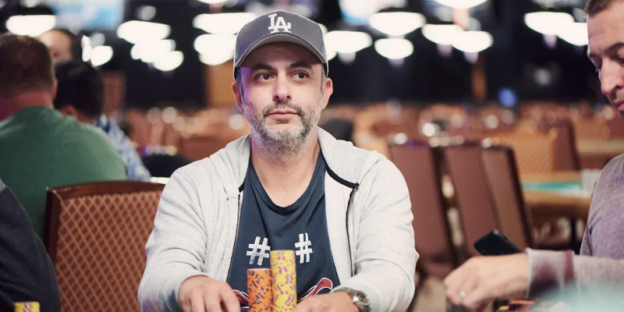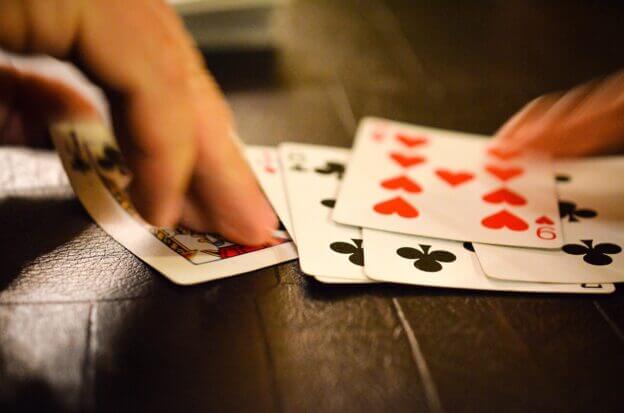In this article I will discuss the topic of blockers and the underlying concepts when using them to build GTO strategies.
We will take a look at what different types of blockers they are, and when they are used. I will also debunk some common misconceptions about blockers, or rather deepen the understandings and areas that people tend to miss a lot in their own studies.
The concept of blockers is very often misunderstood or misapplied or just not really cared about. A lot of people merely know the meaning of the nut flush blocker or some straight blockers, but that’s about it. It is my intention is to change that here.
Types of Poker Blockers
Throughout the last years, we have witnessed an evolution of blocker plays. At first it was only blockers for big hands in certain spots but now it’s more about finding a lot of small bluffs across all the parts of the game tree, and then also of course the occasional big bluffs with very good blockers
1. Nut Blockers
Blockers to nutty hands like nut flushes, straights, and boats.
At first, most people only used the most obvious blockers, the nut flush blocker or some straight blockers and maybe some pair blockers on pair boards that were blocking boats. They were used for very aggressive bluffs in big pots and they were aimed to fold out very strong hands from our opponent.
2. Value Blockers
Blockers to more marginal, but still strong made hands like sets and two pairs.
As the game progressed, good players started to make really bad moves with top pair because they realized it is quite a bit harder for the opponents to hold a strong hand like top set or top two pair. They then started to play really aggressively with top pairs and gutters, read more boards, and so on.
3. Draw & Future Blockers
Rise of future blockers, draw blockers, and blockers to marginal value hands.
Also then with the use of solvers, these blockers were more common, so people not only wanted to block top pair anymore, they also wanted to block out a good draw. Before that, the nut blocker was usually used when the flush got there, but now you would even use the nut blocker, or even second or third nut flush blocker to go for check raises or continuation bets in order to use them on later streets.
4. Reverse Blockers
Unblocking folds on current and/or later street(s).
So then the next discovery is the reverse blockers, hands that don’t seem to block much at all, but they actually make very good betting candidates because we then have some reverse blockers to villain’s value range, and we unblock folds on the current and on later streets.
Check out this video from our GTO Bits course, where I talk about passive & reverse blockers.
Blocker Guidelines
In the following section I will go into basic blocking guidelines, designed for three different spots.
Bluffing
Especially when we are out of position, villain has a lot of incentive to just slow play the previous streets by just calling, and he will still have a lot of nuts or near-nut hands in his range a lot of the time.
When we’re in position, sometimes the out of position player will come up with some nuts that slow played until the river, so if we are blocking the nuts or blocking very good hands, it definitely helps us to bluff.
On the other hand, if we have very blockers to very strong hands, sometimes it means we have too much showdown value. Sometimes we just beat enough of villain’s range that by betting we pretty much don’t make anything better fold, and don’t make anything worse call.
So if we have these this kind of hands, we should usually always choose to check back in position. Unless we have very good reason to believe that a bluff is higher +EV than a check, like when we think villain is vastly over folding.
Bluff Catching
When it comes to bluff catching it’s actually quite straightforward. So, if we beat value bets, we usually always call. It doesn’t really matter what all our blockers are, if there’s some hands in villain’s range that we can beat, it’s often enough to chop against some of his value bets.
Then, of course, what’s good for us if, if we are blocking value bets like a straight on a straight board, or if we are blocking a flush on a flush board and so on. If we have those blockers blocking value bets, that’s a very good candidate to go for a bluff catch.
Sometimes, based on blockers, we can still make a profitable bluff catch, but it’s really rare. Sometimes you will end up in a situation where you kind of feel like you want to call because villain is bluffing a lot, but you are not even sure if you’re beating all of his bluffs. And usually the best play then is to just fold. There can be exceptions, but usually our play is to just fold if we can’t even beat off the bluffs.
Value Betting
What’s really good for us is if we value betting when we unblock the bluff catchers. For example, if we are betting a hand, like the nut flush and we have the Ace and the Deuce suited, it’s a very good time to go for thin value bets. Maybe even on a paired board (especially if we have a pair blocker), because we don’t block the King-high flush, we don’t block the Queen-high flush, and so on.
And so, what is good for us when we are value betting is if we block busted draws. So, if we had a combo draw on earlier streets, or a value hand together with a draw, it’s a very good candidate to go for a thinner value bet.
Then, what’s really bad for us is obviously if we have no draw blockers. If we are value betting because it means villain will usually just snap fold, and if he doesn’t he will have rather strong hands so, we need to be a little more careful with our thin value bets.
Conclusion
To finalize, I want to go through common blocking myths and facts in the following clip from our courses.
If you want to dive deeper into the topic, make sure check out our courses, where we cover what is mentioned in this article, as well as blocker scenarios, bluffing, and MDF, among other things.



























